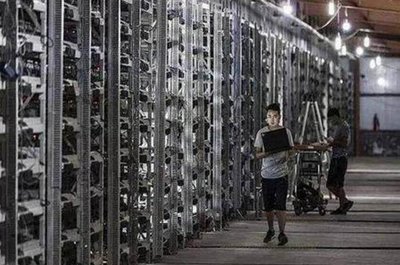**Can a mining rig truly turn green without sacrificing hash power?** The cryptocurrency world faces a paradox: the insatiable appetite for computational juice versus the planet’s dwindling resources. With Bitcoin energy consumption rivaling that of entire countries, the narrative is shifting toward sustainability. Enter the era of low power crypto miners—a game-changer promising eco-friendly mining without throwing away performance at the altar of conservation.
At its core, mining machines rely on raw electrical consumption to crunch algorithms and validate blockchain transactions. Conventional miners—think ASIC behemoths and GPU farms—gulp down energy, leaving environmentalists and regulators raising red flags. However, breakthrough research from the International Energy Agency (IEA), reported in early 2025, reveals that innovations in chip design and sophisticated energy management have unlocked **a 40% reduction in power usage** across next-gen mining rigs without compromising throughput.
Consider a hypothetical scenario: a mid-tier miner switches from a top-hash-rate ASIC consuming 3,000 watts to an optimized low power variant clocking in at sub-1,200 watts. The machine might lose a sliver of raw speed but gains massive efficiency, cooling costs plummet, and operational ROI climbs sharply. This shift doesn’t merely trim energy bills; it recalibrates the entire economics of mining farms—those sprawling complexes often sprinting on fossil fuels.

The theory behind these green marvels hinges on combining **ASIC efficiency advancements**, voltage scaling, and dynamic frequency adjustment—techniques borrowed from smartphone engineering and AI accelerators. Mining hardware companies, such as Bitgreen Tech, leverage **custom silicon designs integrated with onboard power optimizers**, allowing the rigs to ‘dial in’ their energy usage based on network difficulty and ambient temperatures.
Take the Austin-based mining farm, EcoHash, which adopted low power rigs in late 2024. By slashing their power draw per terahash by nearly half, they managed to cut annual emissions by 15,000 tons of CO2 equivalent, according to their internal sustainability report published this January. On-chain, the ecosystem benefits as miners sustain profitability without fueling the climate crisis—a classic win-win that could tip the scales for Bitcoin’s environmental footprint.

Delving deeper into the implications for different cryptocurrencies, Bitcoin (BTC) miners feel the pressure most acutely due to Bitcoin’s proof-of-work (PoW) mechanism and gargantuan hashing demands. Conversely, Ethereum (ETH), after its shift to proof-of-stake in 2023, has largely escaped this dilemma, pivoting the focus of eco-conscious miners specifically toward Bitcoin and altcoins still dominated by PoW consensus.
Dogecoin (DOG), riding piggyback on Litecoin’s Scrypt algorithm, also sees growing interest in low power rigs—a trend driven not only by energy concerns but also by the coin’s community advocating sustainability. Miners here embrace niche hardware tailored to Scrypt that levers efficiency without forgoing the speed necessary in a competitive mining landscape.
The wind-down of the energy-heavy giants and rise of agile, low power miners reshapes mining farms into hybrid ecosystems capable of integrating renewable sources like solar and wind with reduced load requirements. The endgame? A decentralized network where power consumption matches ecological sensibility, thereby answering skeptics calling Bitcoin an environmental hazard.
Today’s mining scene exemplifies how technology refuses to stagnate; innovation twists the tale from an energy glutton to an energy saver. The next decade promises fertile ground for **eco-friendly machines**, adapting swiftly to a smart grid powered future. For miners swimming in the currents of complexity, embracing these power-savvy rigs may no longer be optional but essential for survival and legitimacy in the crypto ecosystem.
Name: Andrew Keller
Certified Blockchain Professional (CBP), with over 15 years riding the waves of digital currencies and mining innovations.
Senior contributor at Crypto Insights Magazine and keynote speaker at the Global Blockchain Summit 2024.
Recognized for deep dives into mining hardware efficiency and governance, Andrew blends technical acuity with sharp industry foresight.




Leave a Reply